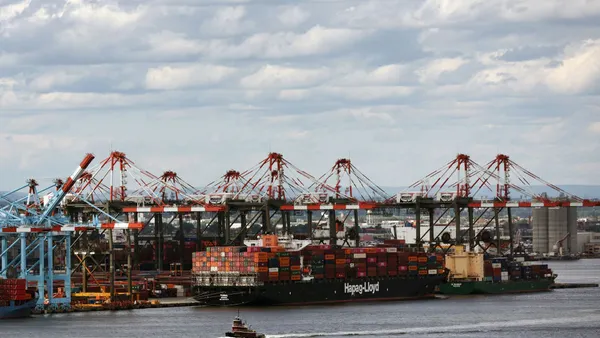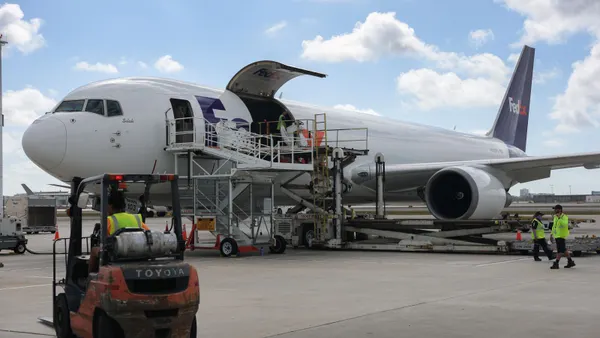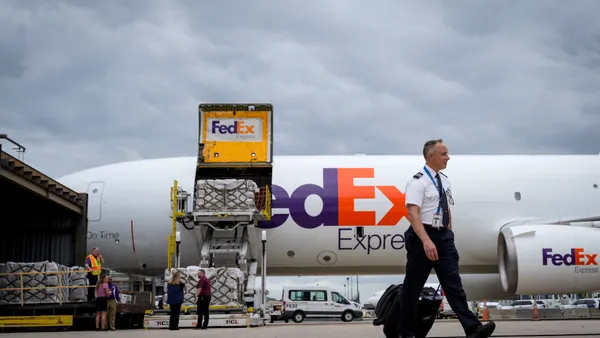Dive Brief:
- The average global air cargo spot rate bucked historical trends by increasing 2% from January to February, according to an emailed report from Xeneta's Clive Data Services. Meanwhile, air cargo demand increased 11% year over year.
- Traditionally, air cargo spots often decline following the previous year end peak season and the period following the Lunar New Year before rebounding. However, this year’s increase and volume uptick was attributed to demand spurred by Red Sea disruptions and e-commerce activity from China.
- “Generally, we wouldn’t expect to see a rate uptick at this time of year. This is likely related to the Red Sea disruption, but this is not the only factor,” Chief Airfreight Officer Niall van de Wouw said in the report. He further noted that e-commerce volumes are benefiting air cargo, making up over 50% of some airlines’ revenue ex-East Asia.
Dive Insight:
The rise of cross-border e-commerce continues to be one of the driving demands for air cargo, especially from Guangzhou and Hong Kong, according to Clive. In November, for instance, e-commerce companies Shein and Temu accounted for a 5% spike in air freight volumes.
The report also flagged that market intelligence indicates that some shippers are now considering or starting to use other hubs to mitigate capacity constraints prompted by e-commerce demand. Some operators have even opted to impose short-term embargoes on import traffic ex-Asia in February to work through backlogs prompted by the uptick in volumes, Clive reported.
“Our conversations with shippers suggests many are looking to derisk their supply chains by avoiding which are now so dominated by e-commerce behemoths. This comes down to simple math for shippers,” van de Wouw said. “If you’re a clothing retailer, with spring on the way in Europe, you want your seasonal products in-store for the peak demand period. If they’re stuck in a sea container because of longer lead times, and you miss this opportunity, the subsequent mark down in the product cost is likely greater than the cost of switching from sea to airfreight.”
Looking ahead, carriers, forwarders and shippers are preparing to launch summer schedules at the end of the month, which will impact the Transatlantic air cargo market which historically sees a roughly 50% increase in belly capacity during the peak summer months, according to Clive. This will not only put downward pressure on air cargo rates from Europe to North America, but cargo that transits through European hubs, including Southeast Asia markets to North America.
“We now wait to see what impact the airline’s summer schedules will have as well as what happens next in the Red Sea,” van de Wouw said. “We would certainly expect to see a downward pressure again on rates once the summer belly capacity returns in the western hemisphere as well as China, where the travel recovery is by no means yet done.”















